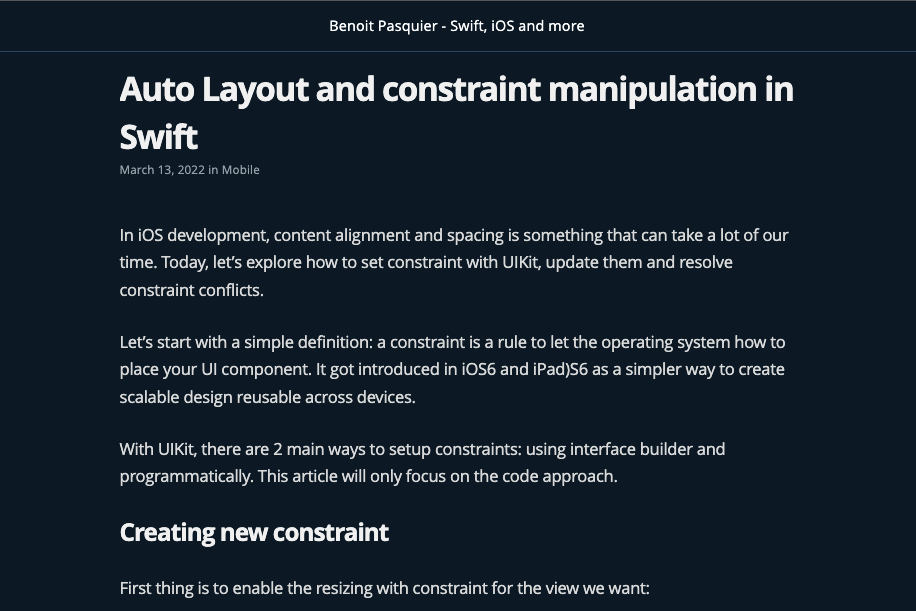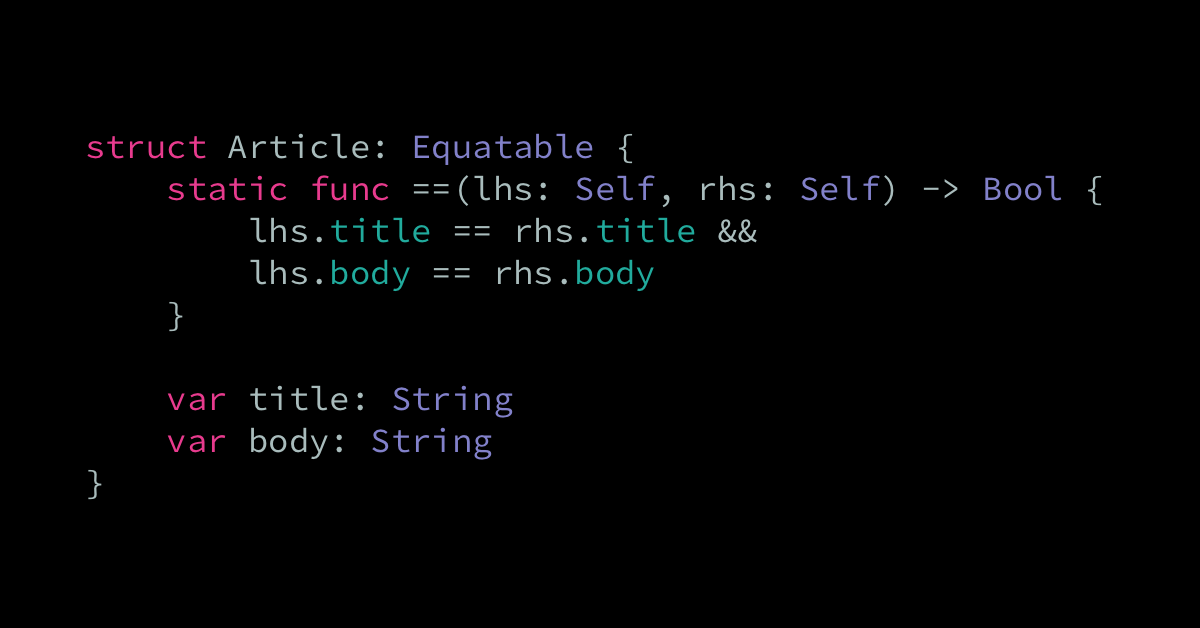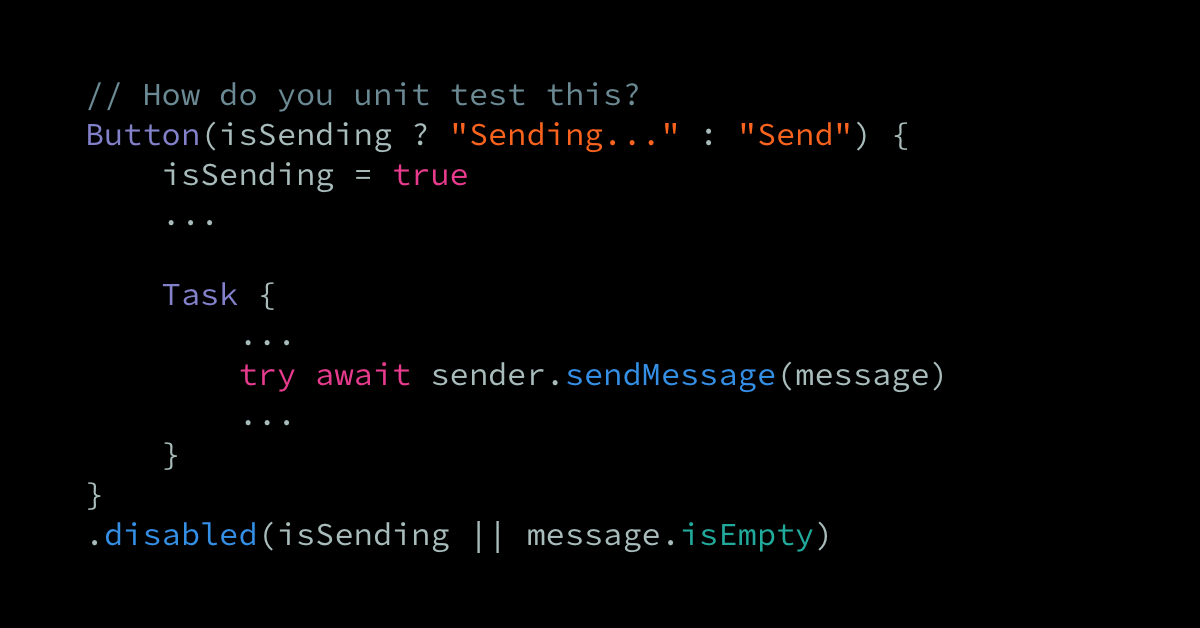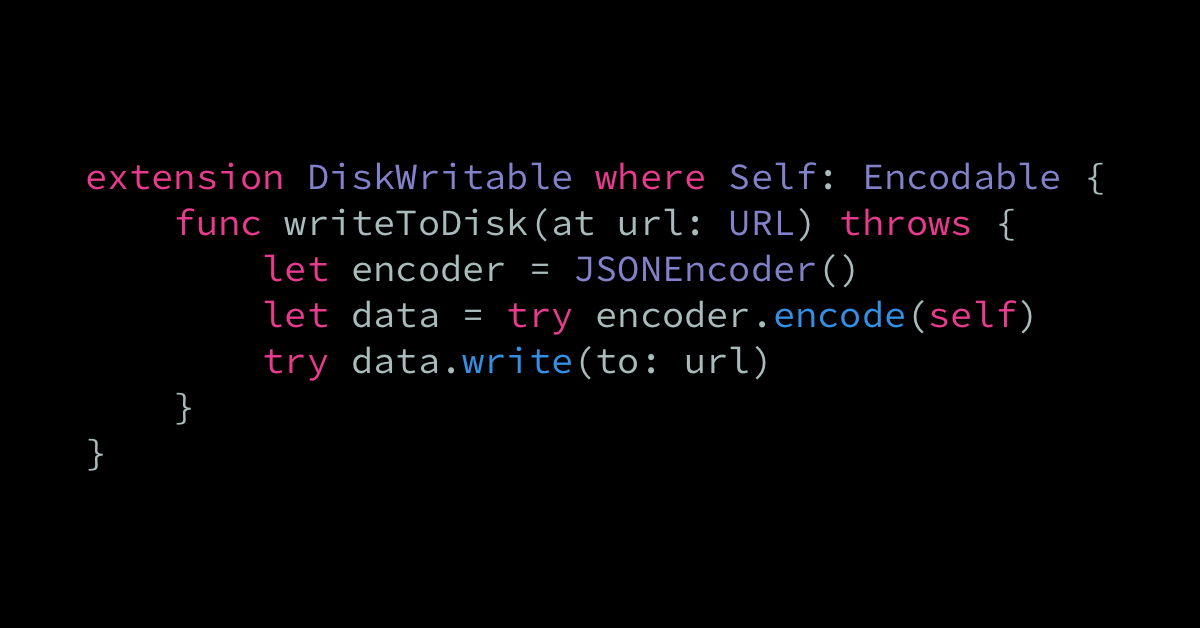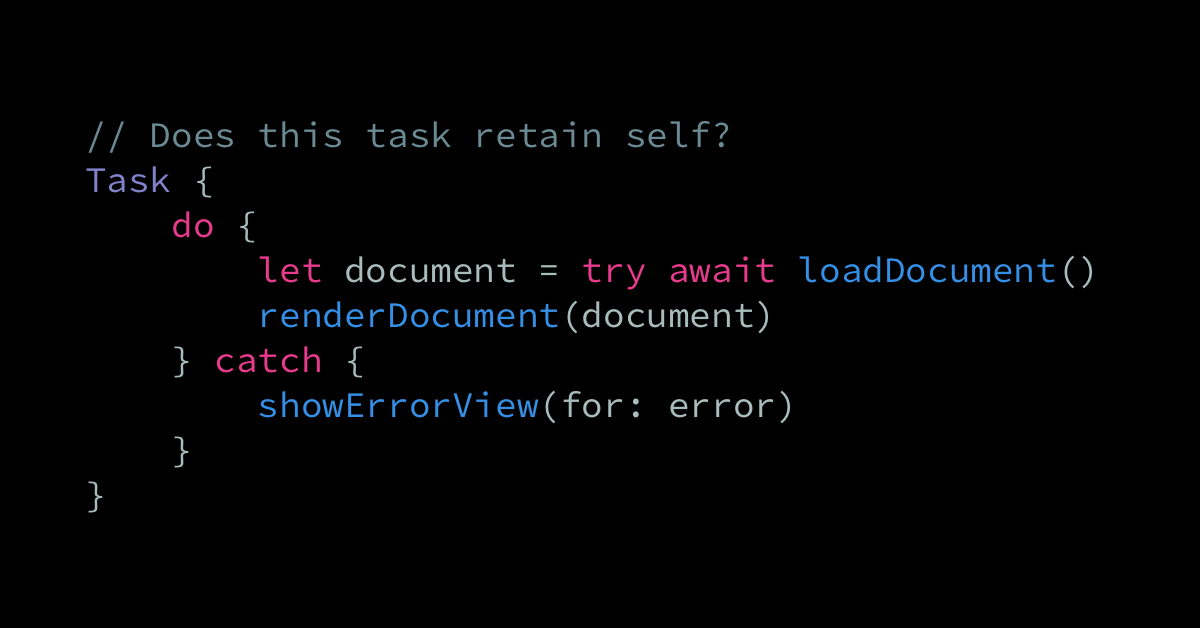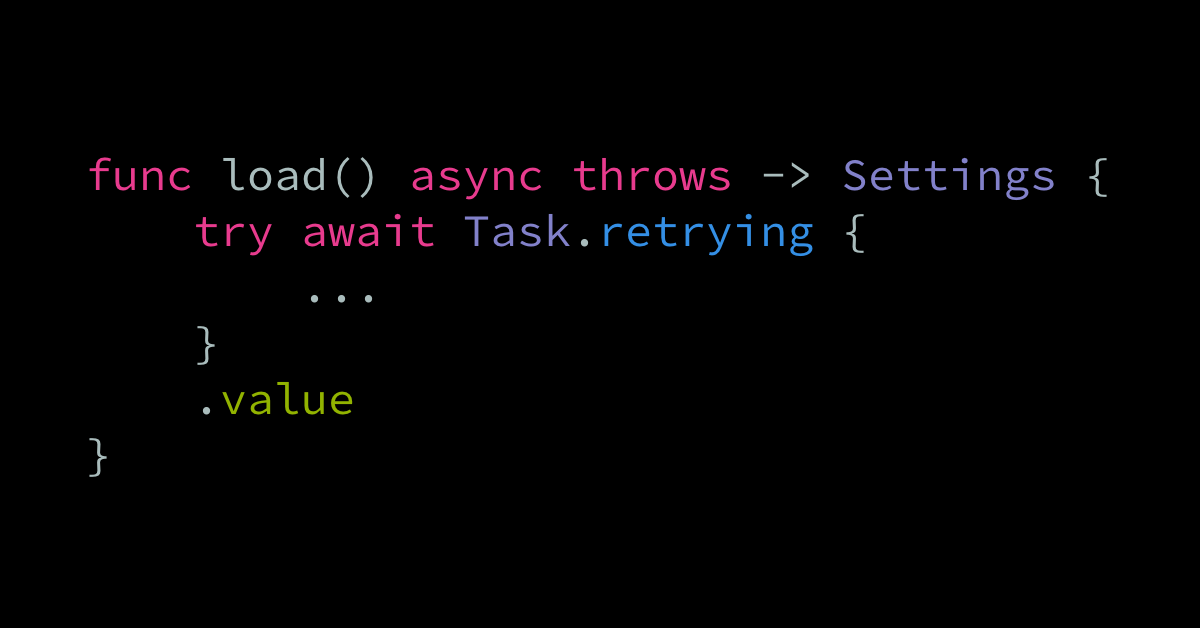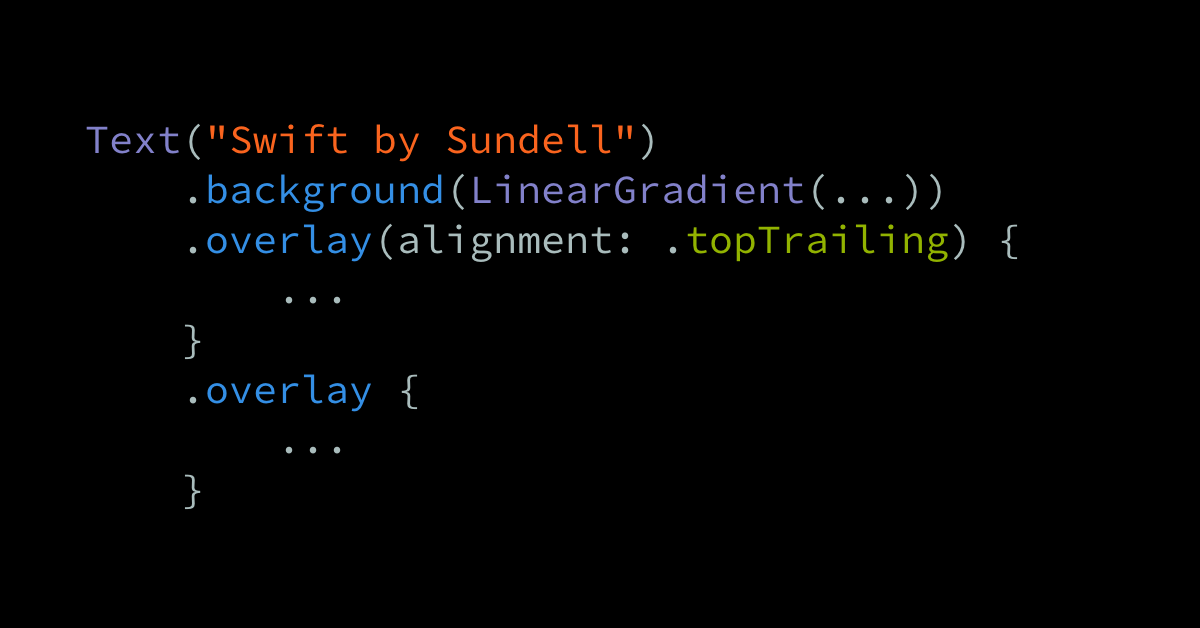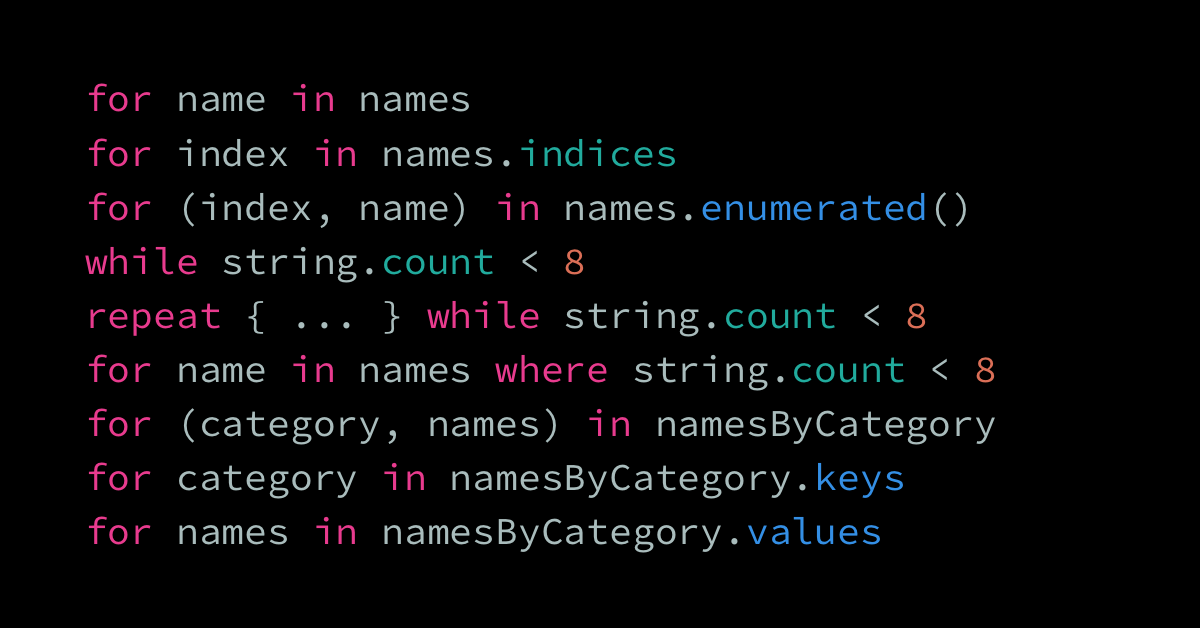In iOS development, content alignment and spacing is something that can take a lot of our time. Today, let’s explore how to set constraint with UIKit, update them and resolve constraint conflicts. Let’s start with a simple definition: a constraint is a rule to let the operating system how to place your UI component. It […]
My thanks to Judo for sponsoring Swift by Sundell — both the website and the podcast — during this first quarter of the year. Those of you who have been following my work for a while might know that I’m a big fan of the concept of “server-driven UIs”, where a UI fetches its entire […]
Checking whether two objects or values are considered equal is definitely one of the most commonly performed operations in all of programming. So, in this article, let’s take a look at how Swift models the concept of equality, and how that model varies between value and reference types. One the most interesting aspects of Swift’s […]
On this 2022 season premiere, JP Simard returns to the show to discuss what’s next for Swift in 2022, and what kinds of improvements and new features that might be coming to the language during the year. Judo: Quickly build native, server-driven UI for iOS and Android, and publish instantly, without having to submit updates […]
A major part of the challenge of architecting UI-focused code bases tends to come down to deciding where to draw the line between the code that needs to interact with the platform’s various UI frameworks, versus code that’s completely within our own app’s domain of logic. That task might become especially tricky when working with […]
One of the core strengths of Swift’s protocols is that they enable us to define shared interfaces that multiple types can conform to, which in turn lets us interact with those types in a very uniform way, without necessarily knowing what underlying type that we’re currently dealing with. For example, to clearly define an API […]
Managing an app’s memory is something that tends to be especially tricky to do within the context of asynchronous code, as various objects and values often need to be captured and retained over time in order for our asynchronous calls to be performed and handled. While Swift’s relatively new async/await syntax does make many kinds […]
Sometimes, we might want to automatically retry an asynchronous operation that failed, for example in order to work around temporary network problems, or to re-establish some form of connection. Here we’re doing just that when using Apple’s Combine framework to implement a network call, which we’ll retry up to 3 times before handling any error […]
SwiftUI offers several different ways for us to create stacks of overlapping views that can be arranged along the Z axis, which in turn enables us to define various kinds of overlays and backgrounds for the views that we build. Let’s explore some of those built-in stacking methods and what sort of UIs that they […]
Swift offers many different built-in ways to iterate over collections (such as arrays, sets, and dictionaries) — the most basic of which being for loops, which let us run a piece of code for each element that was found within a given collection. For example, here we’re looping through an array of names, and we’re […]
